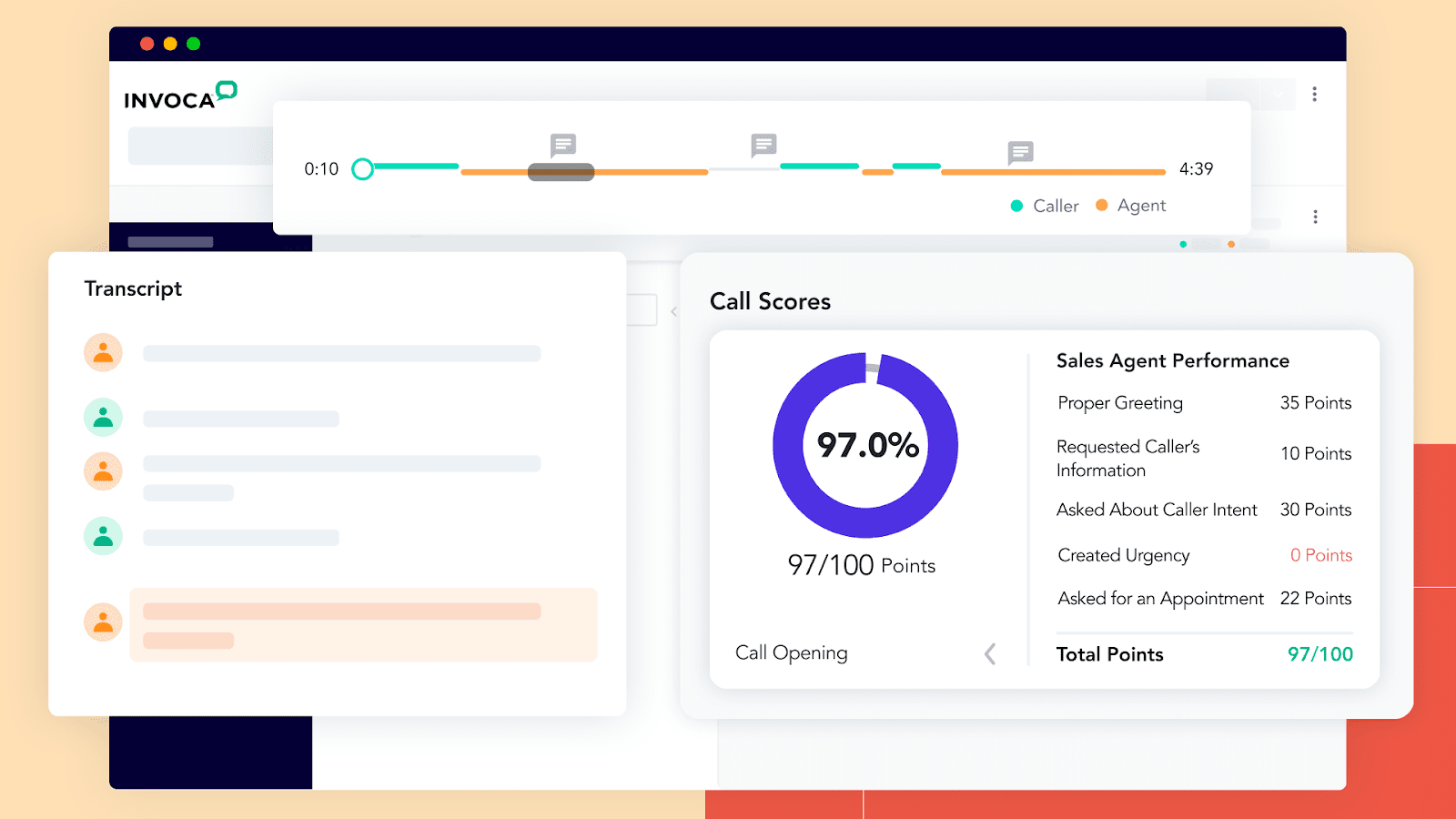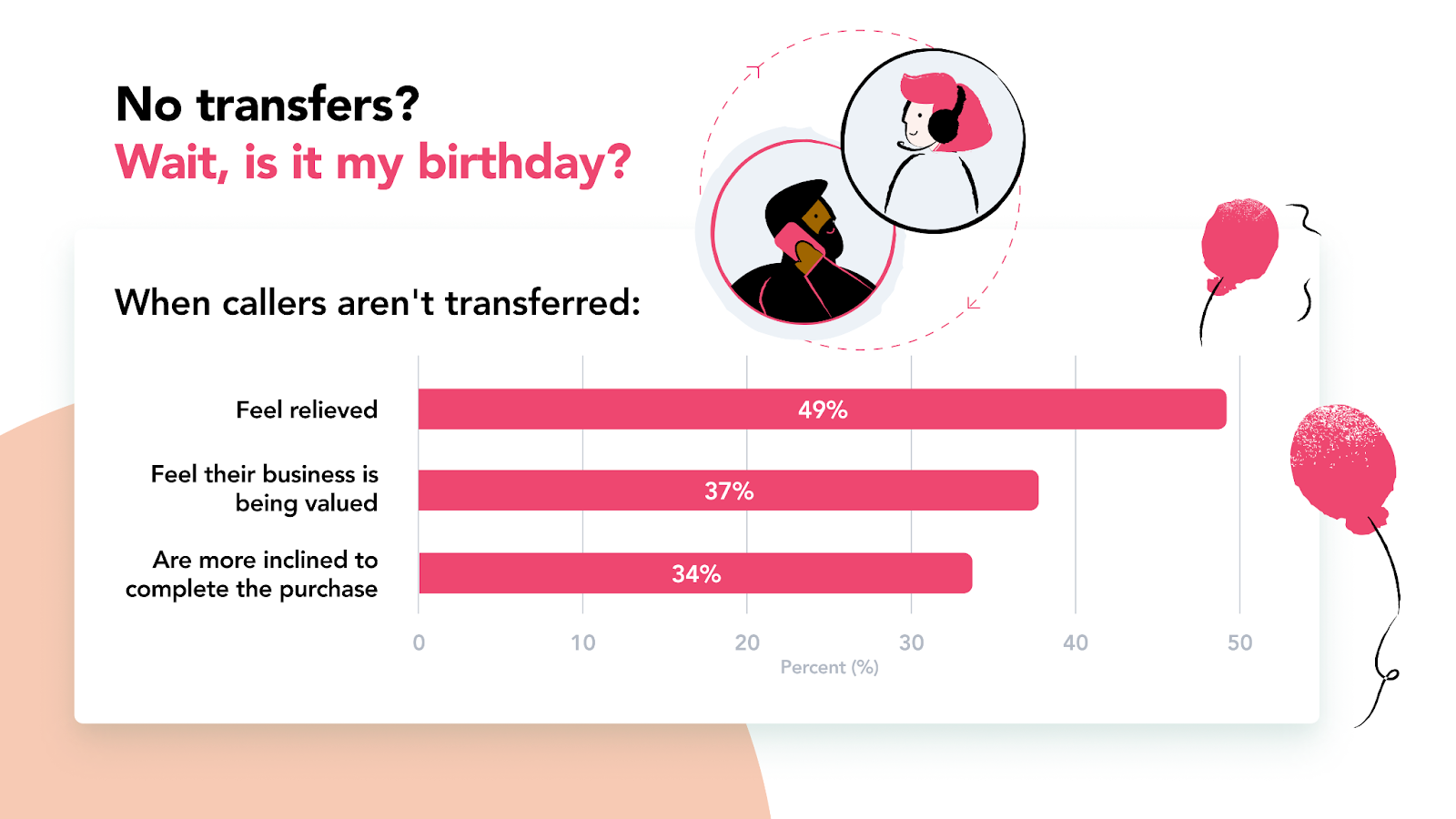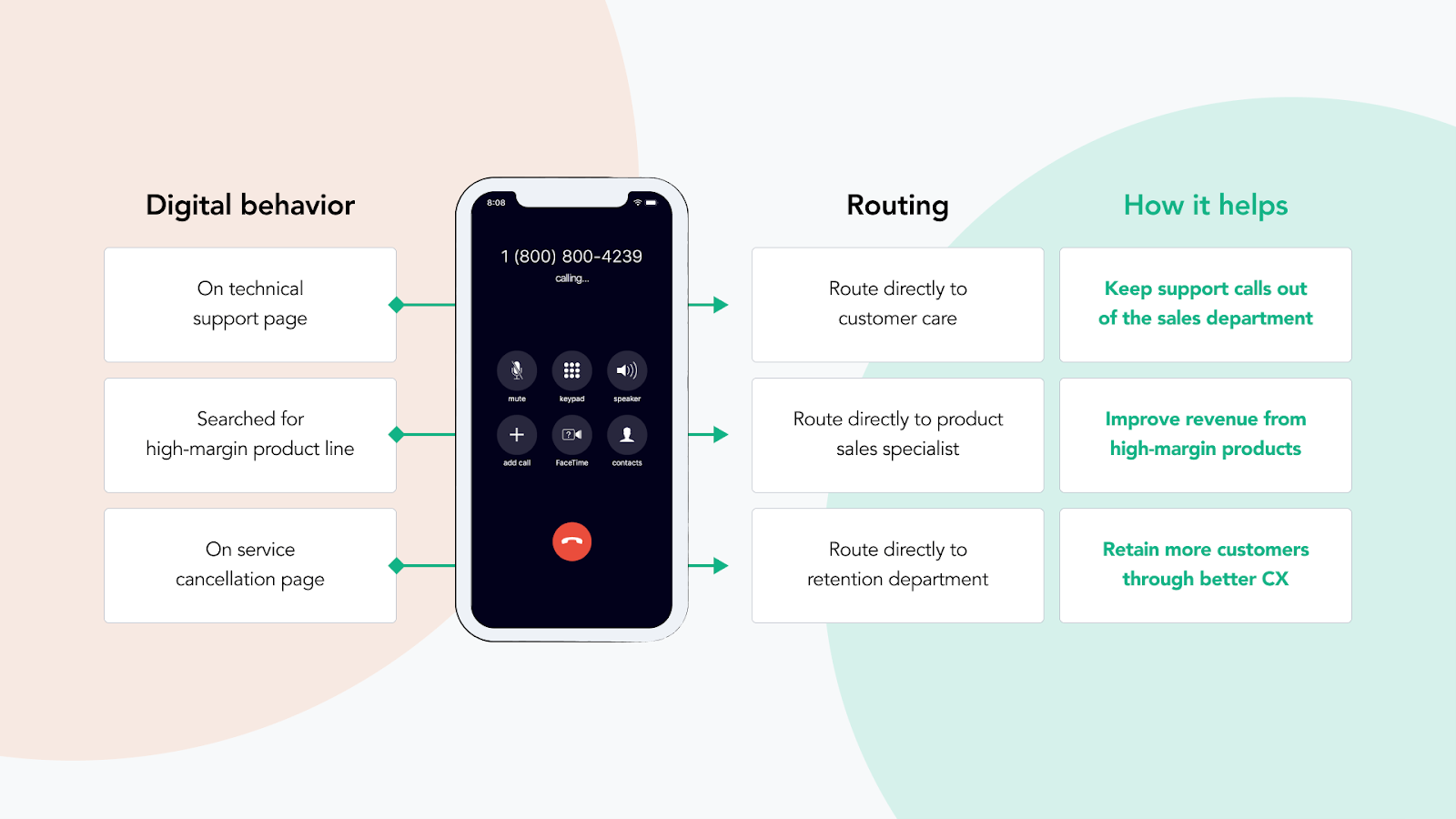7 Mistakes Your Call Center Is Probably Making — and How to Fix Them

Think about when you last made an important buying decision, like purchasing a car, refinancing your home, or choosing an insurance plan. Did you feel comfortable making that decision with a click? Or did you need the reassurance of having a conversation with a real person? If you chose the latter, you aren’t alone. According to Invoca’s Buyer Experience Report, 87% of people say they prefer to call an agent when making high-stakes purchases.
Despite the importance of the call center experience, many companies still view it as a cost center, putting efficiency ahead of innovation, frequently at the expense of the customer experience. This approach is losing favor, though, as companies realize the short-term savings aren’t worth the long-term costs, and forward-thinking brands are now approaching their contact center strategy by viewing it as a value-driving revenue center.
In an increasingly digital world, the call center provides an opportunity to build trusting relationships with customers and provide humanized, empathetic experiences. It’s a chance to acquire customers, build lifetime value, and create differentiation through exceptional experiences in crowded markets. In addition, it’s possibly the best opportunity to build customer loyalty, which is harder to earn in a world of increasingly skeptical consumers. But there are bumps in the road that many companies will hit on the way to transforming the purpose of their call centers.
Of course, no call center can operate at its full potential without the right strategies and tools. To build loyalty and drive revenue, you need to invest in your contact center and ensure you’re avoiding the common pitfalls that plague your competitors. Here are the top seven mistakes we see contact centers making and, most importantly, how you can avoid them.
1. Failing to Address Agent Burnout
Keeping your agents happy is essential to delivering great contact center experiences. If they’re getting burnt out, they’ll be far less likely to go above and beyond for customers. Worse yet, they’ll be more likely to leave your company in search of greener pastures. This problem is especially prevalent now. In 2021, an average of more than 3.95 million workers quit their jobs each month as part of the “Great Resignation.” This is the highest number on record, and call centers weren’t exactly known for their great employee retention numbers before this.
Hiring and training new agents is costly and the gaps will leave your contact center understaffed and your customers unhappy about those “longer than expected” hold times. So, what can you do to reduce burnout and retain your call center agents?
Here are some tips to get you started:
- Have regular one-on-ones with each of your team members
- Collaborate with your agents to set goals that motivate them
- Provide continuous feedback on agent performance
- Acknowledge employee milestones
- Give your agents public praise when they succeed
- Collect regular feedback from your agents and implement it
- Respect employee work-life balance
- Ensure employee compensation is competitive with the market
- Provide a competitive benefits package
- Implement bonus and rewards programs
Another key to reducing burnout is ensuring you have the right technology in place so your agents can do their jobs efficiently—more on this in the next section.
2. Manually QAing Calls
Many contact centers QA their calls manually. This can give you a general representation of agent performance, but there are some flaws to this approach. For example, listening to calls and manually scoring them is time-consuming. In addition, it doesn’t give you full visibility into all your calls. You may be catching your best agents on their worst days or vice versa. It can also be subjective and fraught with human error, which can cause issues down the line with agent compensation.
To eliminate subjectivity from the QA process and ensure every agent’s performance is fairly measured, more contact centers are using AI-powered conversation intelligence solutions. With conversation intelligence, you can automatically analyze and score 100% of your calls to get a complete picture of agent performance without having to listen to calls or read transcripts.
You can also set up your own unique criteria to score sales agent success. For example, you may want your sales agents to start with a greeting script, mention an upcoming promotion, and then ask the caller to schedule an appointment. The call scorecard uses AI to automatically detect which of these criteria are met on each call and assign a corresponding score.
The effect of automated quality assurance is two-fold. First, your agents’ efforts will be fairly measured. Second, your agents will receive their scores in real-time, empowering them to self-coach and improve their performance on the fly. This will not only improve your QA procedures but will also help to reduce agent burnout.

3. Inefficiently Routing Callers
When customers call your business, there’s nothing more frustrating than bouncing around from agent to agent like a pinball, constantly repeating your issue. This problem is incredibly common—Invoca’s Buyer Experience Report found that 79% of callers are rerouted at least once when they call a business. Our research found that when callers aren’t transferred, they feel relieved and are far more likely to complete their purchase.

So, what can you do to correct the issue? You can use a conversation intelligence solution to identify which marketing channel, website page, or digital ad drove the call. Once your solution determines the source, it can intelligently route the caller to the best agent to handle their inquiry.
For example, calls driven by the support page would automatically be routed to a customer support specialist. Conversely, calls driven by a search ad promoting a limited-time deal would be routed to sales. This gets callers to the right agent quickly and eliminates the friction of an IVR.

You can also use routing tools from your VoIP solution. Solutions like 8x8 also allow you to use data-directed call routing. Data-directed call routing is when calls are routed to agents based on the customer data available through their CRM or help desk profile.
A common example is routing new customer calls to the sales department and existing ones to the support department. In addition, many VoIP solutions provide IVRs that you can customize for your unique business needs.

When you reduce unnecessary transfers with your conversation intelligence or VoIP solution, you dramatically improve customer satisfaction.
4. Not Centralizing Customer Experience Data
Siloed customer experience data is a common problem for many companies, and, if left unchecked, it can be costly. According to Gartner, making erroneous decisions based on old or bad data could cost small to mid-sized businesses on average over $15 million per year in losses. To ensure your organization is operating as efficiently as possible, you need to ensure you’re integrating your call center data with the rest of your customer experience data.
With VoIP and conversation intelligence solutions, you can capture rich insights from phone conversations, including who the caller was, their product or service interests, the questions they asked, any customer experience issues they faced, and if they made a purchase.
You can then activate this data in whatever platform you use to measure and optimize the customer experience, whether it’s Google Analytics, Salesforce, Adobe Experience Cloud, or virtually any platform you can think of. As a result, you can get a holistic view of the customer journey and make smarter optimizations to improve the end-to-end customer experience.
5. Asking for Redundant Information
Invoca’s Buyer Experience Report found that 53% of customers say they need to repeat their reason for calling to multiple agents. This creates a poor experience, since most callers expect you to know the reason they called when you answer the phone. You may be wondering how this is possible—after all, who are you, Nostradamus? But all it takes is the right technology.

If you’ve taken the last tip to heart and centralized your customer data, it should be easy to understand your callers’ needs. With call tracking and conversation intelligence, you can automatically pass data about the caller’s digital journey into your CRM and give it to your agents via a screen pop or whisper message.
For example, your agents can see which marketing channel or webpage drove the call before they answer. VoIP solutions can also automatically pass data into your CRM, including the caller’s live chat history with your agents.
When you predict caller intent, your agents can better tailor their conversations to delight customers and win sales. For example, if the caller previously engaged with an ad for a new mortgage loan, your agent could preemptively pull up the application information This makes customers feel that their time is valued. As a result, you’ll see your conversion rates increase.
6. Not Having Transparent KPIs
How can you achieve success if you can’t even measure it? To ensure that you’re consistently delivering great experiences, you need the right metrics in place to quantify what a great experience means to your customers. Having a data-driven approach to your contact center operations also ensures that you can replicate your success.
What call center KPIs should your contact center measure? Here are our top suggestions:
- Customer survey responses
- Net promoter score (NPS)
- Number of unanswered calls
- Average wait time
- Call transfer rate
- Call abandonment rate
- Final call resolution
- Repeat caller rate
- Customer churn rate
- Cost per call
- Average time to complete after-call tasks
- Agent attrition rate
When you start to get a consistent pulse on these metrics, you can identify new ways to improve the call center experience.
For example, if you notice that the average transfer rate is increasing, you should streamline your IVRs and routing process to help callers reach the right agent more quickly. If you notice that issues are not being resolved on the first call, you should give your agents additional training and update your troubleshooting procedures.
If you notice, on the other hand, that your agents are spending too much time after the call logging information, you should look into automating your CRM data so that they can spend more time having meaningful conversations with customers.
7. Not Having a Strategy to Recapture Lost Sales Opportunities
No matter how well-staffed your call center is, it’s inevitable that some calls will slip through the cracks and go unanswered. According to Invoca’s platform data, on average, 25% of calls to businesses are never answered by an agent. These calls can cost you revenue opportunities and waste the marketing dollars that your team used to drive them. They can also hurt key contact center KPIs like your total number of unanswered calls and customer churn rate.
The question is, how can you recapture lost opportunities that went to voicemail or were never answered at all? Open your missed call logs and start dialing away? I admire the initiative, but how do you know who was a high-value sales lead and who wasn’t?
The most effective contact centers are more targeted in their approach. They use conversation intelligence to sort their missed calls by the marketing source that drove them and the IVR prompts they selected. With this information, agents can prioritize callers who engaged with ads for high-value items and who pressed “1” to speak to sales.
Once you identify your high-value leads, you should make sure your agents are trained with the proper scripts before they call them back. You should also make sure they display a healthy dose of empathy for missing their call the first time around.
The Stakes for the Call Center Experience Are Higher Than Ever
Today’s consumers have higher expectations for the call center experience than ever before. In fact, 32% of consumers say they’ll stop doing business with a brand they love after just a single bad experience.
If your contact center experience isn’t up to snuff, you’ll damage your brand’s reputation and lose long-term customers. That’s why it’s so important to ensure that your contact center is properly equipped with the right people, technology, and processes to create seamless end-to-end journeys.
About the author:
Derek Andersen is a Senior Content & SEO Specialist at Invoca, the leader in conversation intelligence. In his spare time, he enjoys reading the latest fiction, shredding his Gibson SG, and running on the Chicago Lakefront Trail.


